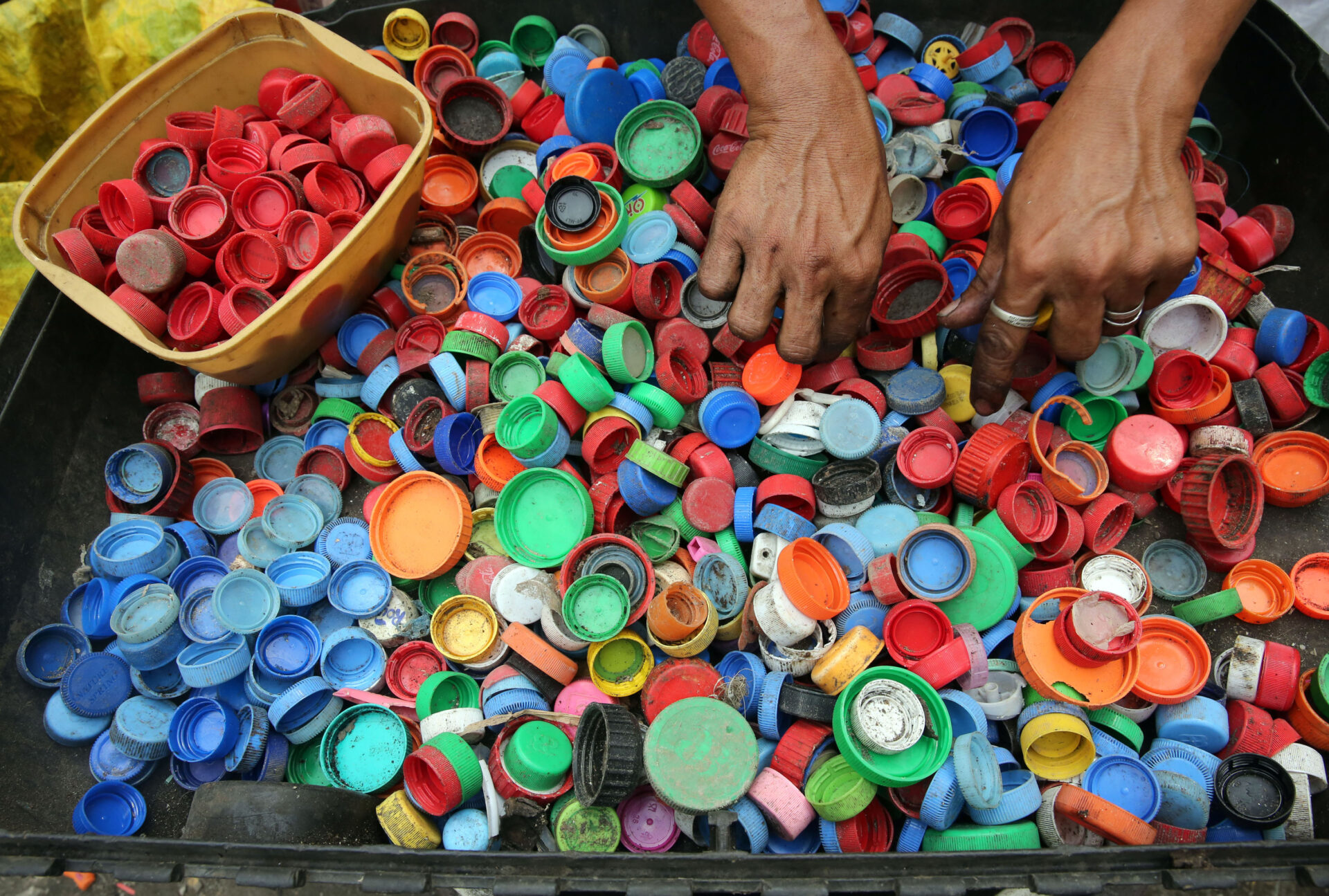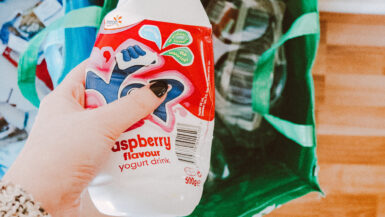As we navigate through the 21st century, the devastating impact of plastic waste on our environment has become increasingly apparent. In response, individuals and organizations worldwide are embracing the concept of plastic-free living. This article aims to provide an insightful look into the future of plastic-free living, exploring the key aspects such as emerging innovations, sustainable alternatives, and the role of governments and corporations in fostering a world less reliant on plastic. As we delve into the possibilities and challenges that lie ahead, we hope to inspire and empower our readers to take a proactive role in shaping a more sustainable future for generations to come.
Innovative Biodegradable Alternatives to Single-Use Plastics
The journey towards a plastic-free future is fueled by the development of innovative biodegradable alternatives to single-use plastics. These materials not only have the potential to significantly reduce plastic pollution but also pave the way for more sustainable consumer practices. In this section, we will explore some of the most promising biodegradable alternatives, their potential applications, and the challenges associated with their widespread adoption.
Edible and Water-Soluble Packaging
One of the most exciting developments in sustainable packaging materials is the emergence of edible and water-soluble packaging. These novel materials can be consumed or dissolved in water, leaving no trace of waste behind. For instance, seaweed-based packaging is gaining traction as an eco-friendly alternative to single-use plastics, particularly in the food and beverage industry. Not only is it biodegradable and edible, but it is also a renewable resource with minimal impact on marine ecosystems.
Bioplastics Derived from Plant-Based Materials
Bioplastics, derived from plant-based materials such as cornstarch, sugarcane, and potatoes, offer a more sustainable solution to conventional petroleum-based plastics. These materials are designed to break down more rapidly under specific environmental conditions, reducing the overall impact on the environment. Polylactic acid (PLA) is a popular bioplastic used in applications ranging from food packaging to disposable cutlery and straws. However, it is important to note that not all bioplastics are created equal, and their biodegradability can vary significantly depending on the specific composition and disposal conditions.
Mushroom-Based Materials
Mushroom-based materials, such as mycelium, present a promising alternative to single-use plastics, particularly in the packaging industry. Mycelium, the vegetative part of fungi, can be grown into custom shapes and sizes, creating a natural and biodegradable protective layer for products. This innovative material has already caught the attention of major corporations, with some exploring its potential for replacing traditional plastic packaging materials.
Challenges and Considerations for Widespread Adoption
While these innovative biodegradable alternatives hold great potential, their widespread adoption is not without challenges. Factors such as cost, scalability, and consumer perception can influence the success of these materials in replacing single-use plastics. Additionally, it is crucial to ensure that the disposal and recycling infrastructure is in place and accessible for these materials to truly make a positive impact on the environment. As we move towards a plastic-free future, ongoing research, collaboration, and education will be key in facilitating the transition to more sustainable materials and practices.
Zero-Waste Lifestyle: Tips for a Sustainable Home and Routine
Embracing a zero-waste lifestyle is an empowering and effective way to reduce our reliance on single-use plastics and minimize our environmental impact. By making small, incremental changes to our daily routines, we can cultivate a more sustainable way of living that benefits both our planet and future generations. In this section, we will outline practical tips and strategies for implementing a zero-waste lifestyle in various aspects of our lives, from how we shop and consume to how we clean and organize our homes.
Smart Shopping: Embracing Bulk and Package-Free Options
One of the most significant sources of plastic waste comes from our shopping habits. By choosing to shop at bulk stores or those offering package-free options, we can reduce the amount of single-use plastic we bring into our homes. When shopping, remember to bring reusable bags, containers, and bottles to further minimize waste. Additionally, supporting local farmers’ markets not only promotes plastic-free living but also helps strengthen local economies and reduces the carbon footprint associated with food transportation.
Reusable Alternatives: A Key to Eliminating Single-Use Items
Swapping out single-use items for their reusable counterparts is a simple yet powerful step towards a zero-waste lifestyle. Some examples include replacing plastic water bottles with reusable stainless steel or glass bottles, opting for cloth napkins and towels instead of paper products, and using silicone food storage bags instead of plastic zip-lock bags. By making these small changes, we can significantly decrease our consumption of single-use plastics and contribute to a more sustainable future.
DIY Cleaning Products and Personal Care Items
Many commercial cleaning products and personal care items come in plastic packaging and contain harmful chemicals. By creating our own eco-friendly alternatives, we can reduce plastic waste and promote a healthier home environment. Simple ingredients such as vinegar, baking soda, and essential oils can be used to make a variety of cleaning solutions, while recipes for homemade personal care items like toothpaste, deodorant, and shampoo are readily available online. Not only do these DIY alternatives support a zero-waste lifestyle, but they also offer an opportunity for customization based on individual preferences and needs.
Composting: Turning Waste into Nutrient-Rich Soil
Composting is a valuable practice that transforms food waste into nutrient-rich soil, reducing the need for plastic trash bags and synthetic fertilizers. Setting up a compost bin at home can be a simple and rewarding process, with various methods available to suit different living situations and preferences. By composting our food scraps, we can significantly reduce the amount of waste that ends up in landfills and contribute to a more circular and sustainable way of living.
Incorporating these tips and strategies into our daily routines can have a profound impact on our personal plastic footprint and inspire others to join us on the journey towards a plastic-free future. By embracing a zero-waste lifestyle, we are actively participating in the collective effort to safeguard our planet and create a more sustainable world for generations to come.
The Rise of Package-Free Shopping and Refill Stations
As the public becomes increasingly aware of the detrimental effects of single-use plastics, package-free shopping and refill stations are emerging as popular alternatives to traditional retail experiences. By offering eco-friendly packaging solutions and a more sustainable way of purchasing everyday products, these innovative retail models are revolutionizing consumer habits and paving the way for a future free from plastic waste. In this section, we will explore the growth of package-free shopping and refill stations, the benefits they offer to both consumers and the environment, and the challenges they face in achieving widespread adoption.
What are Package-Free Shops and Refill Stations?
Package-free shops, also known as zero-waste stores, offer a wide range of products without the unnecessary plastic packaging typically found in conventional retail outlets. Instead, customers are encouraged to bring their own containers, bags, and bottles to purchase items in bulk or by weight. Refill stations, on the other hand, focus specifically on providing liquid products, such as detergents, soaps, and oils, allowing customers to refill their reusable containers directly from dispensers. Both of these retail models aim to minimize plastic waste and promote a more circular economy.
Benefits of Package-Free Shopping and Refill Stations
There are numerous benefits associated with package-free shopping and refill stations, both for consumers and the environment. Some of the key advantages include:
- Reduced Plastic Waste: By eliminating single-use plastics, these retail models significantly decrease the amount of plastic waste generated by consumers.
- Cost Savings: Purchasing products in bulk or by weight often results in cost savings for customers, as they only pay for the amount they need and avoid paying extra for packaging materials.
- Less Food Waste: Buying only the required quantity of food items can help to minimize food waste, as customers are less likely to purchase excess amounts that may spoil before consumption.
- Support for Local Producers: Many package-free shops and refill stations prioritize sourcing products from local suppliers, contributing to the local economy and reducing the carbon footprint associated with transportation.
- Increased Environmental Awareness: Shopping at package-free stores and refill stations encourages consumers to be more mindful of their consumption habits and consider the environmental impact of their choices.
Challenges and Future Prospects
While package-free shopping and refill stations are gaining popularity, there are still challenges to overcome in order to achieve widespread adoption. Some of these challenges include:
- Convenience and Accessibility: The availability and proximity of package-free shops and refill stations can be a limiting factor for many consumers, particularly in rural or underprivileged areas.
- Consumer Habits: Changing long-established shopping habits can be difficult for some individuals, who may initially find package-free shopping and refilling containers to be less convenient or time-consuming.
- Regulations and Hygiene: Ensuring compliance with food safety regulations and maintaining strict hygiene standards can be a challenge for package-free shops and refill stations.
Despite these challenges, the future of package-free shopping and refill stations appears promising, as more consumers embrace sustainable living and seek out eco-friendly alternatives to traditional retail experiences. As the demand for plastic-free options continues to grow, it is likely that we will see an expansion of these retail models, further supporting the global shift towards a plastic-free future.
Government Policies and Initiatives Promoting Plastic-Free Living
As the global community grapples with the consequences of plastic pollution, governments worldwide have begun to recognize the urgent need for effective policies and initiatives to promote plastic-free living. By implementing regulations, providing incentives, and supporting innovative solutions, governments play a crucial role in driving the transition towards a sustainable future. In this section, we will explore the various government-led efforts aimed at reducing plastic waste and encouraging plastic-free practices among citizens and industries.
Banning Single-Use Plastics
One of the most significant policy measures adopted by governments around the world is the banning of single-use plastics. These bans often target items such as plastic bags, straws, cutlery, and disposable plates, which are major contributors to plastic pollution. By outlawing these items, governments aim to encourage the use of sustainable alternatives and reduce the amount of plastic waste entering our environment. Countries such as Canada, India, and members of the European Union have already implemented or announced plans for such bans, setting a strong precedent for other nations to follow.
Extended Producer Responsibility (EPR) Programs
Extended Producer Responsibility (EPR) programs are an innovative policy approach that holds manufacturers and retailers accountable for the environmental impact of their products and packaging. Under EPR schemes, producers are required to take responsibility for the collection, recycling, or disposal of their products, often through the establishment of take-back or deposit-return systems. This shift in responsibility not only promotes the reduction of plastic waste but also encourages industries to adopt more sustainable packaging solutions. Several countries, including Germany, Sweden, and South Korea, have successfully implemented EPR programs, demonstrating their potential as a pivotal tool in the fight against plastic pollution.
Financial Incentives for Sustainable Practices
Governments can also promote plastic-free living by providing financial incentives to encourage sustainable practices among both consumers and businesses. Examples of such incentives include tax rebates for purchasing eco-friendly products, grants for businesses to implement sustainable packaging solutions, and subsidies for recycling facilities. By offering financial support, governments can stimulate the adoption of plastic-free practices and accelerate the transition to a more sustainable economy.
Public Awareness Campaigns and Education
Raising public awareness and fostering a culture of plastic-free living is another critical component of government-led efforts to address plastic pollution. By investing in educational campaigns, public service announcements, and school programs, governments can inform citizens about the environmental impact of single-use plastics and inspire them to adopt more sustainable habits. Additionally, these efforts can help to dispel misconceptions about plastic alternatives and empower individuals to make informed choices that contribute to a cleaner and healthier planet.
Collaboration with the Private Sector and Non-Governmental Organizations (NGOs)
Governments can further amplify their impact by partnering with private sector organizations and NGOs that share a commitment to plastic-free living. Collaborative initiatives can include joint research and development projects, public-private partnerships for waste management, and the promotion of eco-friendly products and services. By working together, governments, businesses, and NGOs can pool resources, expertise, and influence to drive meaningful change in the global fight against plastic pollution.
In summary, government policies and initiatives play a vital role in shaping the future of plastic-free living. By introducing effective regulations, providing financial incentives, raising public awareness, and collaborating with various stakeholders, governments can help to create a world where plastic waste is minimized, and sustainable practices are the norm. As we continue to witness the consequences of plastic pollution, it is crucial that governments maintain their momentum in fostering a plastic-free future for the benefit of both the environment and future generations.
Public Awareness Campaigns and the Role of Social Media in Reducing Plastic Waste
As the global community seeks to address the pressing issue of plastic pollution, public awareness campaigns and social media platforms have emerged as powerful tools in promoting plastic-free living. In this subsection, we will explore the various ways in which public awareness campaigns and social media are contributing to the reduction of plastic waste, as well as the challenges and opportunities they present in shaping a more sustainable future.
How Public Awareness Campaigns Drive Change
Public awareness campaigns play a crucial role in educating the public about the environmental impact of single-use plastics and promoting the adoption of sustainable alternatives. These campaigns often utilize a combination of traditional media channels, such as television and print advertisements, and digital platforms to reach a wide audience. By sharing compelling visuals, facts, and stories, public awareness campaigns can inspire individuals to rethink their consumption habits and take action to reduce their personal plastic footprint.
The Power of Social Media in Amplifying the Plastic-Free Movement
Social media platforms, such as Facebook, Instagram, and Twitter, have become instrumental in amplifying the plastic-free movement and fostering a sense of community among like-minded individuals. Influencers and activists use these platforms to share their plastic-free journeys, tips, and resources, inspiring their followers to make more sustainable choices and spread the message to their own networks. Additionally, social media platforms provide a space for eco-conscious brands and organizations to connect with consumers, further driving the demand for plastic-free products and services.
Challenges and Opportunities in Leveraging Social Media for Plastic-Free Living
While social media offers immense potential for promoting plastic-free living, there are also challenges and potential pitfalls to consider. One of the primary challenges is the prevalence of misinformation and “greenwashing” on social media, where companies and influencers may overstate or misrepresent the sustainability of their products and practices. It is essential for consumers to critically evaluate the information they encounter online and seek out reputable sources to inform their plastic-free journey.
On the other hand, social media platforms present a unique opportunity for fostering innovation and collaboration in the pursuit of a plastic-free future. By facilitating the exchange of ideas, resources, and best practices, social media can help to drive the development of new plastic-free technologies and solutions. Furthermore, the global reach of these platforms enables the plastic-free movement to transcend geographical boundaries and unite individuals from diverse backgrounds in the shared goal of reducing plastic waste.
In conclusion, public awareness campaigns and social media platforms hold significant potential in shaping the future of plastic-free living. By leveraging these tools to educate, inspire, and connect individuals and organizations, we can foster a global movement towards a more sustainable world. As we navigate the challenges and opportunities presented by these platforms, it is essential to remain vigilant in our pursuit of accurate information and hold ourselves and others accountable in our commitment to reducing plastic waste.





Leave a reply